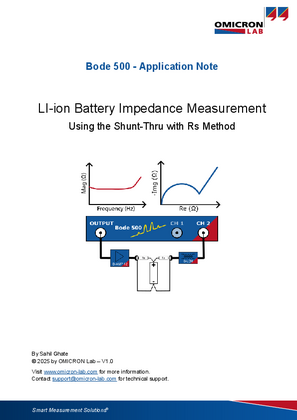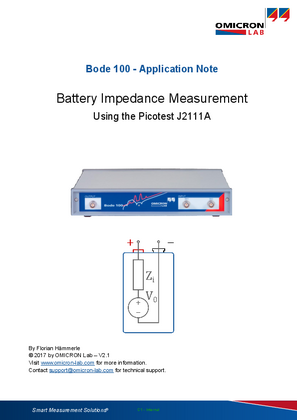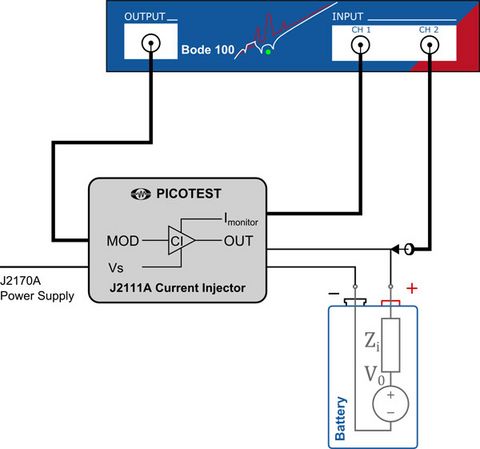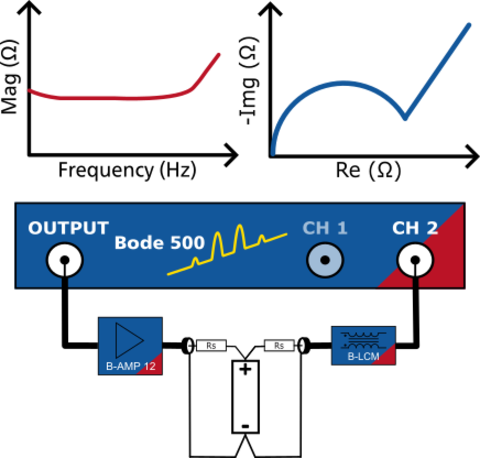Battery Impedance includes information about the internal state of a battery. Measuring the battery impedance over frequency can help to identify the internal characteristics of a battery. There are different possibilities how to configure a battery impedance measurement. Check out the following application notes to learn more.
Battery Impedance Measurements
Measurement using Bode 500 in an Extended Shunt-Thru Setup
Battery impedance is typically low, therefore the Shunt-Thru method is applicable. However, the DC voltage of a battery can harm the Bode Analyzer. In this Appication Note, the Bode 500 was used in an extended Shunt-Thru with Series Resistance connection setup. The Series Resistor reduces the current into the ports of the Bode 500, protecting it from the DC voltage of the battery.
Check out the application note below to learn more about how to measure a battery impedance using the Shunt-Thru with Rs method:
Measurement using Bode 100 in conjunction with Picotest J2111A
The Bode 100 in combination with the Picotest J2111A respectively J2111B current injector offers a simple test set to measure the impedance spectrum of a battery having a DC voltage up to 50 V.
If you want to know more about this measurement, please download the application note below. In this application note, we measure the battery impedance in a frequency range from 1 Hz to 10 MHz.
Questions & Feedback
We try to constantly improve our application notes and videos. To do so, we are happy to receive your valuable opinion on them. Therefore, please send us your comments and insights via the feedback form, which you can access via the button below.



